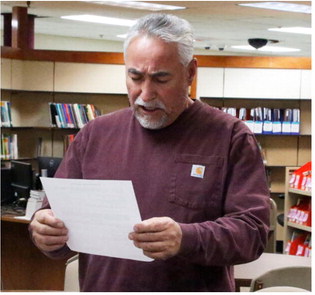USDA Offers Disaster Assistance To Ag Producers
Agricultural operations in Montana have been significantly impacted by drought and recent wildfires. The U.S. Department of Agriculture has technical and financial assistance available to help farmers and livestock producers recover from these adverse weather events. Impacted producers should contact their local USDA Service Center to report losses and learn more about program options available to assist in their recovery from crop, land, infrastructure, and livestock losses and damages.
USDA Disaster Assistance
Producers who experience livestock deaths in excess of normal mortality or sell injured livestock at a reduced price may be eligible for the Livestock Indemnity Program. To participate in LIP, producers will have to provide acceptable documentation of death losses or evidence of reduced sales resulting from an eligible adverse weather event and must submit a notice of loss to the USDA Farm Service Agency no later than the annual program payment application date, which is 60 calendar days following the calendar year in which the loss occurred. The LIP payment application and notice of loss deadline is March 3, 2025, for 2024 calendar year losses. Livestock producers who experience losses related to wildfire should check with their local FSA office for LIP eligibility criteria.
Also, the Livestock Forage Disaster Program offers compensation to eligible livestock producers who have suffered grazing losses for covered livestock and who are also producers of grazed forage crop acreage of native and improved pastureland with permanent vegetative cover or acreage planted specifically for grazing. Grazing losses must occur on land physically located in a county experiencing a qualifying drought during the normal grazing period for the county. A list of qualifying counties with drought can be found here.
LFP provides compensation to eligible livestock producers who have covered livestock and who are also producers of grazed forage crop acreage on rangeland managed by a federal agency if the eligible livestock producer is prohibited by the federal agency from grazing the normal permitted livestock on the managed rangeland due to a qualifying fire.
The qualifying drought and qualifying grazing losses, and notification of prohibition to graze federal land due to fire, must have occurred in the grazing period and crop year. For grazing losses on rangeland managed by a federal agency, an eligible livestock producer may elect to receive assistance for losses due to drought conditions or fire conditions, if applicable, but not both.
Meanwhile, the Emergency Assistance for Livestock, Honeybees, and Farm-Raised Fish Program provides eligible producers with compensation for feed and grazing losses. Livestock producers may be eligible for compensation for above normal costs of hauling water and feed/forage to livestock as well as transporting livestock to forage or other grazing acres. For ELAP, producers are required to complete a notice of loss and a payment application to their local FSA office no later than the annual program application deadline, Jan. 30, 2025, for 2024 calendar year losses.
Additionally, eligible orchardists and nursery tree growers may be eligible for cost-share assistance through the Tree Assistance Program) to replant or rehabilitate eligible trees, bushes or vines. TAP complements the Noninsured Crop Disaster Assistance Program) or crop insurance coverage, which covers the crop but not the plants or trees in all cases. For TAP, a program application must be filed within 90 days of the disaster event or the date when the loss of the trees, bushes or vines is apparent.
“Based on your reported losses or damages, our local Farm Service Agency county office staff are ready to help connect you with the programs best suited to meet your wildfire and drought recovery needs” said Maureen Wicks, State Executive Director for FSA in Montana. “Our staff will do our best to work with the loss documentation you have available. We understand that these are trying times, and you’re pulled in many directions, so when you’re able, please get in touch with us to begin the reporting process. The sooner we have the information, the sooner we can get county committee action on your requests for assistance. Examples of loss documentation include but are not limited to farm records, herd inventory, receipts and pictures of damages or losses.”
FSA also offers a variety of direct and guaranteed farm loans, including operating and emergency farm loans, to producers unable to secure commercial financing. Producers in counties with a primary or contiguous disaster designation may be eligible for low interest emergency loans to help them recover from production and physical losses. Loans can help producers replace essential property, purchase inputs like livestock, equipment, feed and seed, cover family living expenses or refinance farm-related debts and other needs.
Additionally, FSA offers several loan servicing options available for borrowers who are unable to make scheduled payments on their farm loan programs debt to the agency because of reasons beyond their control.
The Farm Storage Facility Loan Program provides low-interest financing so producers can build, repair, replace or upgrade facilities to store commodities. Loan terms vary from three to 12 years. Producers who incurred damage to or loss of their equipment or infrastructure funded by the FSFL program should contact their insurance agent and their local USDA Service Center. Producers in need of on-farm storage should also contact USDA.
Risk Management
Producers who have risk protection through Federal Crop Insurance or FSA’s NAP should report crop damage to their crop insurance agent or FSA office, respectively. If they have crop insurance, producers should provide a notice of loss to their agent within 72 hours of initial discovery of damage and follow up in writing within 15 days.
For NAP covered crops, a Notice of Loss must be filed within 15 days of the loss becoming apparent, except for hand-harvested crops, which should be reported within 72 hours.
“Crop insurance and other USDA risk management options are offered to help producers manage risk because we never know what nature has in store for the future,” said Eric Bashore, director of USDA’s Risk Management Agency Regional Office that covers Montana. “Times of disaster can be a trying time for producers, and they should stay in close contact with their crop insurance agent. Producers can be assured that the Approved Insurance Providers, loss adjusters and agents are experienced and well-trained in handling these types of events.”
Conservation
Outside of the primary nesting season, emergency and non-emergency haying and grazing of Conservation Reserve Program acres may be authorized to provide relief to livestock producers in areas affected by a severe drought or similar natural disasters. Producers interested in haying or grazing of CRP acres should contact their county FSA office to determine eligibility.
FSA’s Emergency Conservation Program can assist landowners with financial and technical assistance to remove debris from farmland such as

